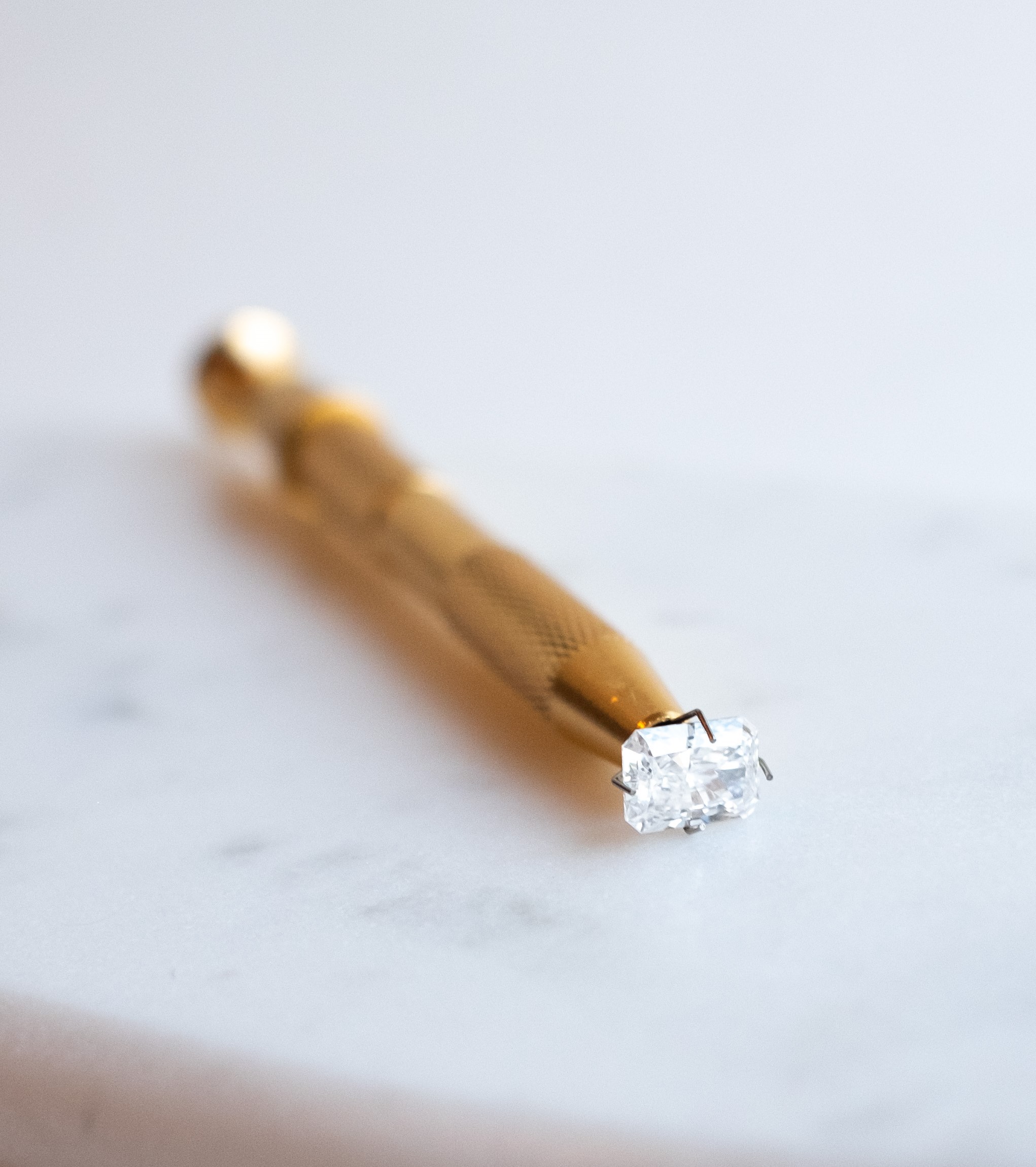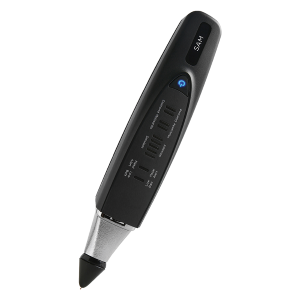Lab grown diamonds are surging in popularity, but its not always easy to get the facts. For example, if you purchase a lab diamond should it always test as “diamond” on a diamond tester? To know whether to panic or not if your lab diamond tests as “moissanite”, read below!
If you ask your local jeweler to check that your diamond is real, they will likely pull out a multi-tester pen. The “multi-tester” combines a heat conductivity tester, which distinguishes diamond from materials commonly used to fake a diamond such as cubic zirconia (cz) or colorless zircon, with an electrical conductivity tester, which distinguishes diamond from the common diamond look-a-like synthetic moissanite. (The electrical conductivity test is a necessary additional test for moissanite since the thermal conductivity of moissanite is comparable to that of diamond.)
So, since lab grown diamonds are optically, chemically, and structurally the exact same as diamonds mined from the earth, they should test as diamond, right?
Often yes, but not always! In nature, diamonds with boron impurities in their carbon structure (the boron lends a bluish tint to the diamond if present in high enough quantity) are exceedingly rare, but do exist. However, a number of near colorless lab grown diamonds also contain minute amounts of boron (specifically those produced by the HPHT method). Unlike other types of diamonds (which are insulators), diamonds with boron conduct electricity (like moissanite).
Therefore, some genuine lab grown diamonds may test as “moissanite” on the common multi-tester pen instead of “diamond”. However, thankfully most gemologists and experienced jewelers can fairly easily distinguish diamond from moissanite just by looking at a stone’s refraction and fire with the naked eye, especially for a larger diamond such as a center stone of an engagement ring.
Of course, to be sure, you should always get a certification report from a respected lab like GIA (which runs advanced testing to identify your stone) for your diamond when you purchase it.
For a longer breakdown of how lab grown diamonds test on diamond tester pens, see the great video below from Julia Griffith of The Gem Academy.


Comments +